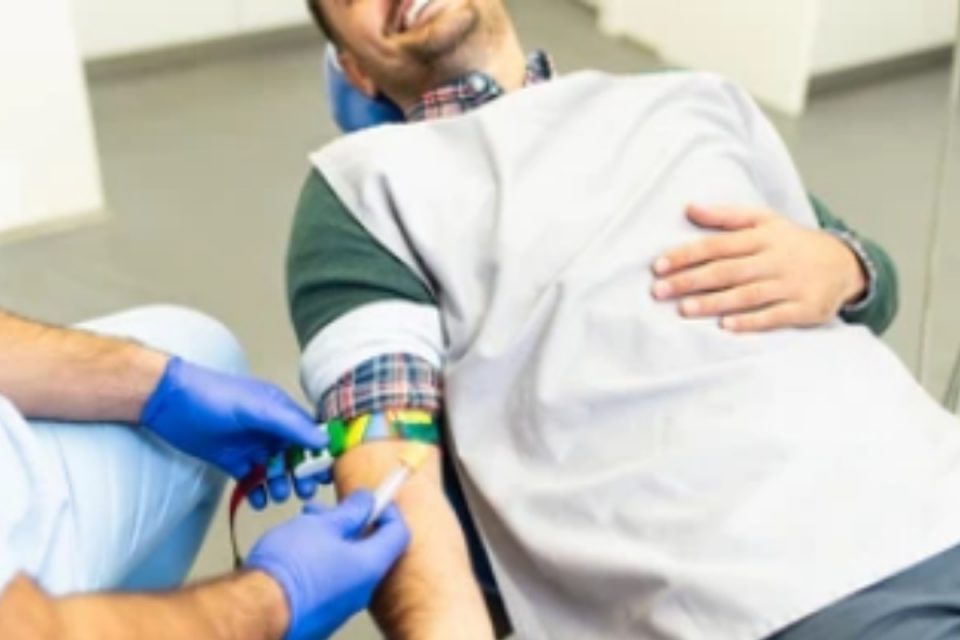Doctors have just realized that the human body can heal itself. Platelet-rich plasma therapy is a kind of regenerative medicine that can increase the natural growth factors that your body employs to mend tissue.
Though PRP treatments are a relatively new rejuvenation method, they are becoming increasingly popular in the medical world. Today, the market is valued at $167million, meaning it’s an excellent treatment for sports injuries and hair loss.
The procedure is performed by a trained medical professional, such as a dermatologist or plastic surgeon for facial plastic surgery procedures, according to the patient’s needs. And, it requires a few minutes of your time.
So, find a treatment center that suits your needs based on this information:
Table of Contents
What Is PRP treatment?
PRP is a non-surgical treatment that uses your blood to promote healing. The process involves extracting a small amount of your blood and separating specific components called platelets. Platelets are cells that help with clotting and healing in the body.
They also contain proteins called growth factors and cytokines that help stimulate new collagen production in your skin. Your platelets are then injected back into the same area where they came from along with an antibiotic to prevent infection.
Platelets release these substances when they contact damaged tissue, initiating the healing process. Furthermore, by extracting PRP from your blood and injecting it into the skin, you can stimulate this natural healing response in a targeted area of your body.
This procedure is most effective in naturally restricted blood flow, such as ligaments, tendons, and joints. Platelet-rich plasma helps the treated region heal by stimulating cell repair and regeneration.
PRP Treatments Are Used to Treat?
PRP is a rejuvenating therapy that aids in healing cells and tissues that have been injured. It’s best for treating:
- Chronic pain due to cell degeneration or soft tissue injury
- Damaged ligaments, tendons, muscles, and joints
- Chronic wounds like diabetic foot ulcers
- Osteoarthritis knees
- Scars from acne or surgery
Plastic surgeons use PRP treatments for cosmetic facial procedures, including:
- Eliminating facial lines and wrinkles
- Improve skin texture, and tone
- Remove even dark circles or under-eye bags
- Treating hair loss
Risks and Side Effects of PRP Therapy
There are risks and side effects associated with PRP therapy. But given that PRP injection is a low-risk technique, the side effects are rare and minor. But it’s essential to be aware of them before you undergo treatment.
To avoid feeling dizzy, remain hydrated, and eat before the procedure. Other risks are as follows:
- Infection: It can be treated with antibiotics if it is caught early, but it can be severe if it spreads. There is also a small risk of developing a blood clot, which can cause problems such as pain, swelling, and redness.
- Nerve Damage: It is rare but can occur if the PRP injections are not done correctly. It can cause numbness too.
- Bruising: You may have discomfort and bruising at the injection site after the operation.
- Allergic reactions: PRP injections have a reduced risk of allergic reaction than other injectable drugs like corticosteroids because they are made up of your cells and plasma.
FAQs
Who Is An Ideal Candidate for PRP Treatment?
There are a few ways to know if PRP treatment is proper for you. First, consult with a healthcare professional to determine if PRP therapy is a good option for your specific medical condition.
Second, ask yourself if you’re willing to undergo a few injections and tolerate some minor pain and swelling. Finally, be realistic about the likely results of the treatment.
PRP treatments can help treat chronic pain in your joints or other locations, improve hair growth, and reduce inflammation, but it’s not a cure-all.
How is the Recovery Like from PRP Treatment?
The recovery process after PRP therapy varies depending on the individual and the severity of the injury. However, patients report significant improvements after just one treatment in most cases. Recovery times also vary but are typically shorter than traditional surgery or other forms of treatment.
What is the Aftercare of PRP Treatments?
After PRP Treatment, you should follow a few simple guidelines to ensure proper healing and reduce the chance of any complications.
- Do not apply pressure, massage, or heat to the treated area
- Do not swim, bathe, or soak in a hot tub until the wound has healed
- Avoid strenuous activity for a few days
Contact your doctor if you experience any pain, redness, swelling, or drainage.
What Is the Cost of PRP Treatments?
There is no one-size-fits-all answer to this question. The cost of PRP treatments depends on various factors, including the clinic you go to, the geographical area, and the type of treatment you receive.
Generally speaking, PRP treatments tend to be more expensive than other hair loss treatments like hair transplants or medication. However, PRP is a less invasive procedure, and many people find it more effective. A general guide, PRP treatments can cost anywhere from £600 to £1,500 per session.
Bottom Line
PRP treatments are becoming more popular as people learn about their benefits. If you are a health professional who wants to offer these treatments to your patients, PPC pays per click for health professionals advertising is a great way to get started. With PPC, you can target people already interested in PRP treatments and get your services in front of them.

